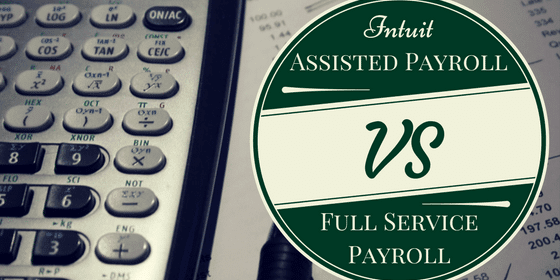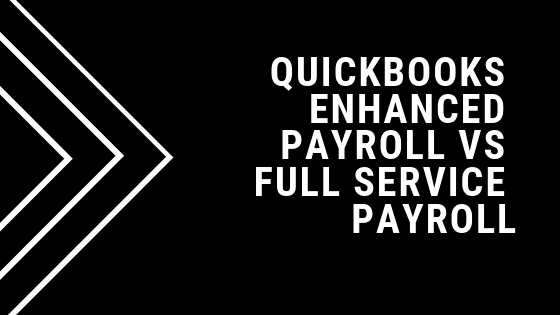
Pete Real
Unless you own a large company, the odds are good that some degree of payroll outsourcing make sense for you. (When we say “large,” we don’t necessarily mean just the Fortune 500, but we know companies with close to 1,000 employees that outsource.) As with most other types of outsourcing, you have a choice as to how much of that particular business function you give to the vendor and how much you keep in-house. Fortunately, when it comes to payroll, Intuit has options. Let’s see how Intuit’s Assisted Payroll compares to its Full Service Payroll.
We’ll tackle the simple one first: Full Service Payroll. The name says it rather well; the only thing required of your business each payroll cycle is to enter employee hours for the pay period. Intuit handles the rest, from calculating pay and payroll taxes to issuing checks or direct deposit to filing and paying payroll taxes. (Direct deposit, incidentally, is a feature included free with Full Service Payroll, and something that will make your employees very happy if you don’t already have it.) They also guarantee that you will have no payroll tax penalties.
Of course, paychecks aren’t the only thing required of your payroll system. Full Service Payroll also handles W-2 preparation at the end of the year, including preparation and electronic submission of the W-3 package to the IRS. The system will also manage all the extras that accompany payroll, like vacation or other paid time off, garnishment and child support deductions, and the rest. Intuit even provides the new-hire reporting required by many states—free of charge.
While QuickBooks is a very popular choice for small business accounting, you are not required to use QuickBooks to take advantage of Full Service Payroll. However, if you do, the integration between the two systems makes the accounting side of payroll a breeze. (Note that you do need to maintain a relatively recent version of QuickBooks for this integration to work. For example, at the end of May 2017, QuickBooks Enterprise 14 will no longer support QuickBooks Payroll—but the current version is Enterprise 17, so that’s still quite a bit of leeway.)
In addition, Intuit has add-on features that can eliminate even more of your human resources headaches. Labor law posters with automatic updates are one. Another is workers’ compensation insurance. The great thing about the policies available through Intuit’s broker, AP Intego, is that they are tied to your payroll, making your policy “pay as you go.” In other words, you pay your premium each pay period based on the actual payroll. This means no large payments compared to financing an annual premium over six to nine months, and even better, no audit premiums—so no surprises at the end of the policy period, which is great for growing companies.
The first thing to know when comparing Full Service Payroll to Assisted Payroll is that there are actually two versions of Assisted Payroll: Basic and Enhanced. Basic Payroll still provides easy pay calculation—just enter employee hours—and the option to pay by check or direct deposit. However, Basic Payroll does not generate payroll tax forms for you nor (as should be obvious) file and pay your payroll taxes. W-2 preparation is also not included.
Enhanced Payroll adds two features to Basic Payroll. The first is preparation of payroll tax forms, although it is important to note that you must still file and pay your payroll taxes. The Enhanced version also includes W-2 preparation and year-end filing.
As with Full Service Payroll, either version of Assisted Payroll can integrate with QuickBooks. All three versions have similar pricing models: a monthly base subscription plus $2 per employee (yes, $2 regardless of version) as of this writing. No matter which version you choose, that’s a bargain for taking the payroll headache off your to-do list.
















